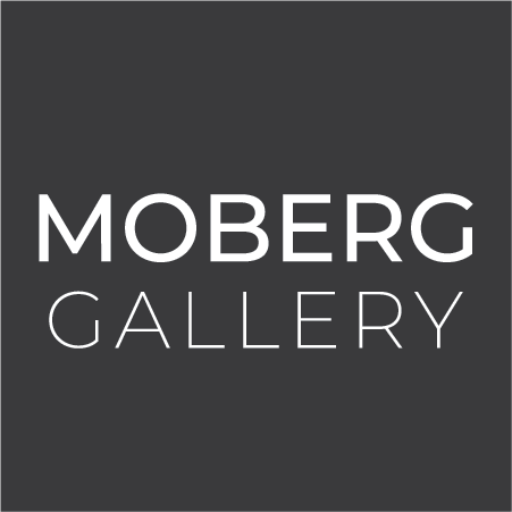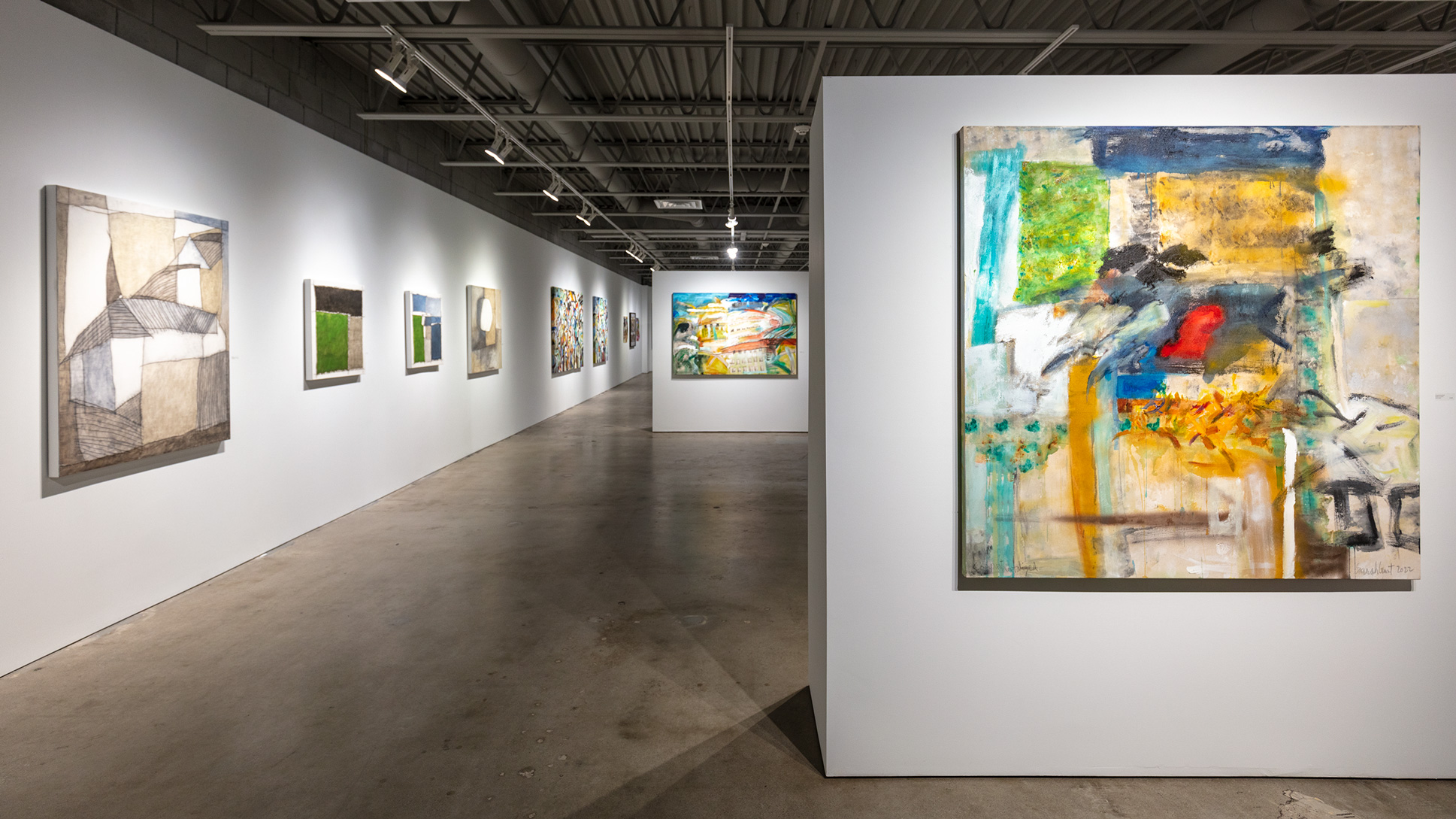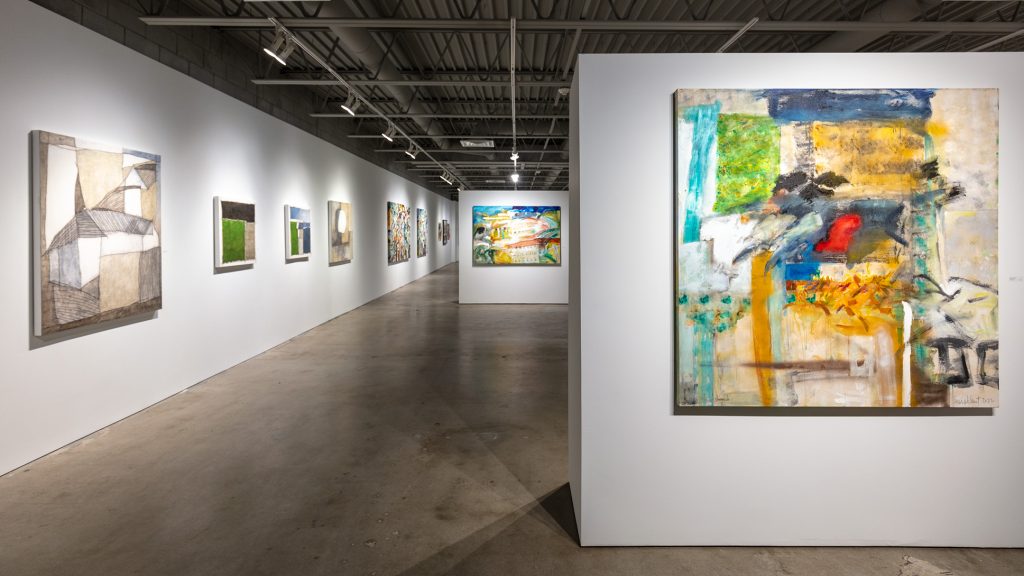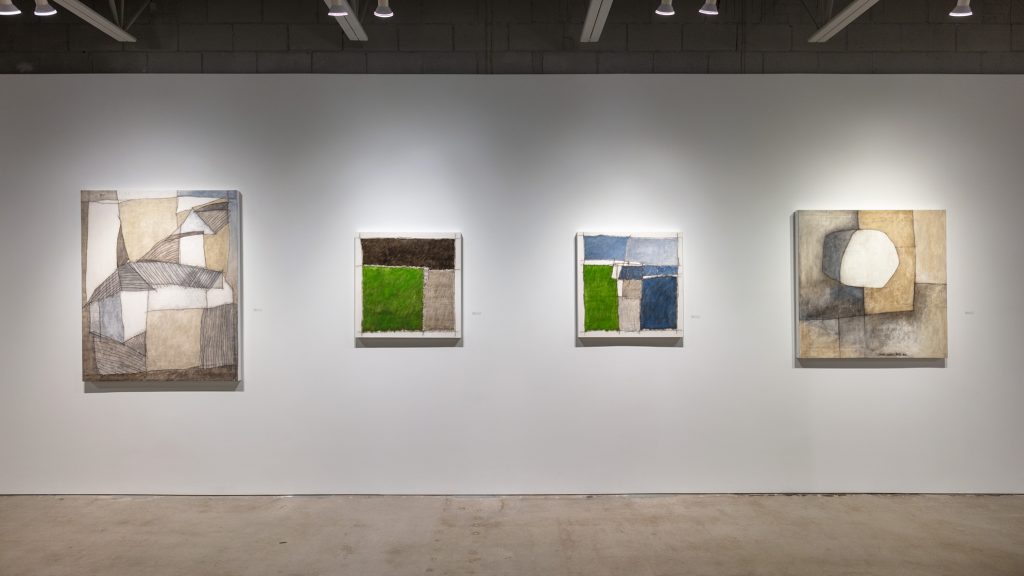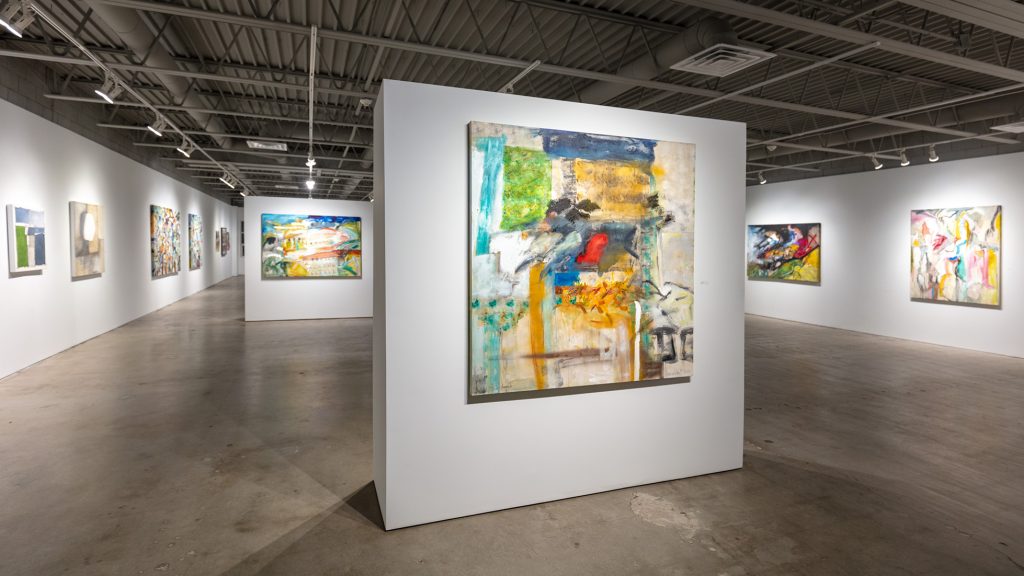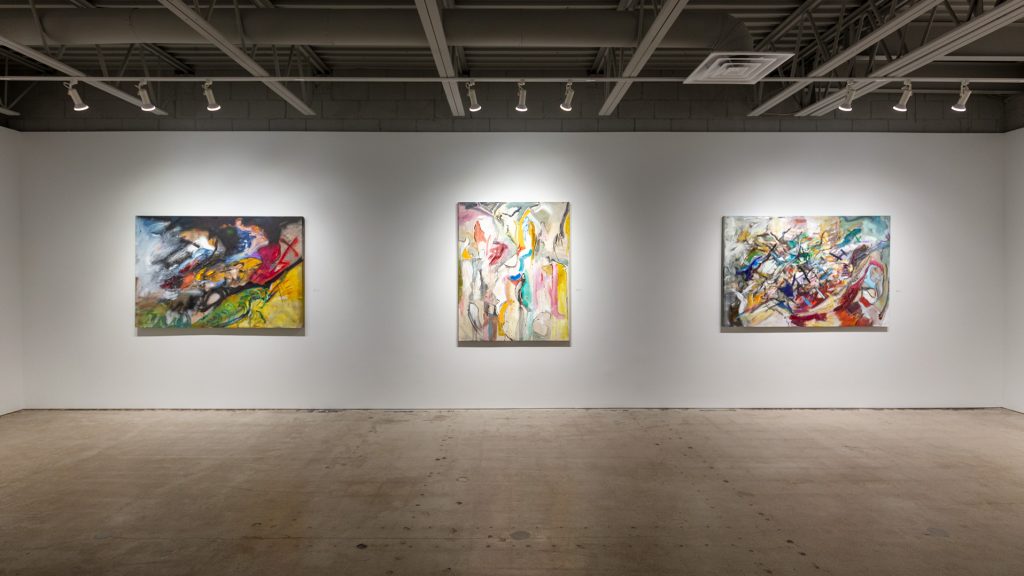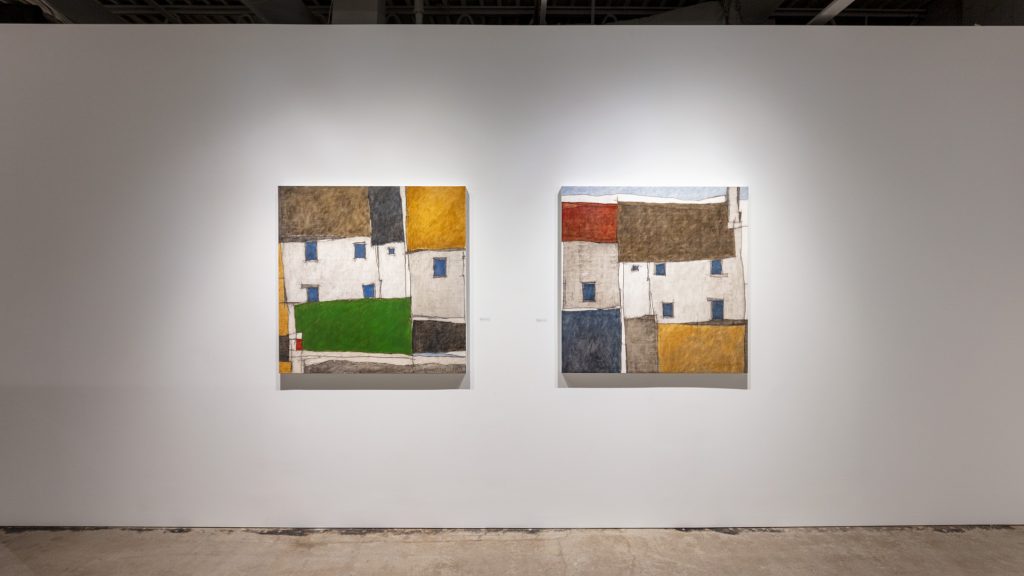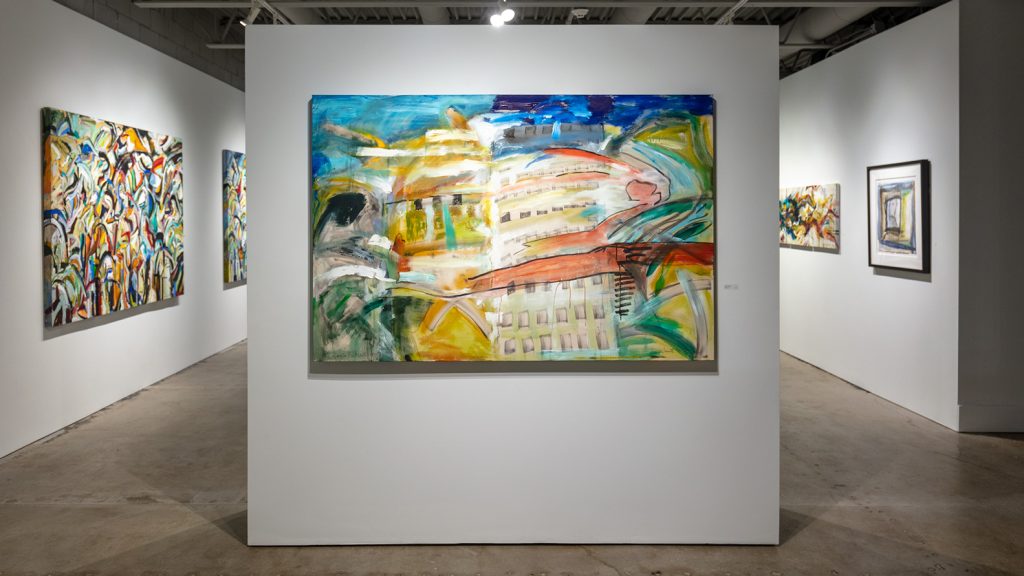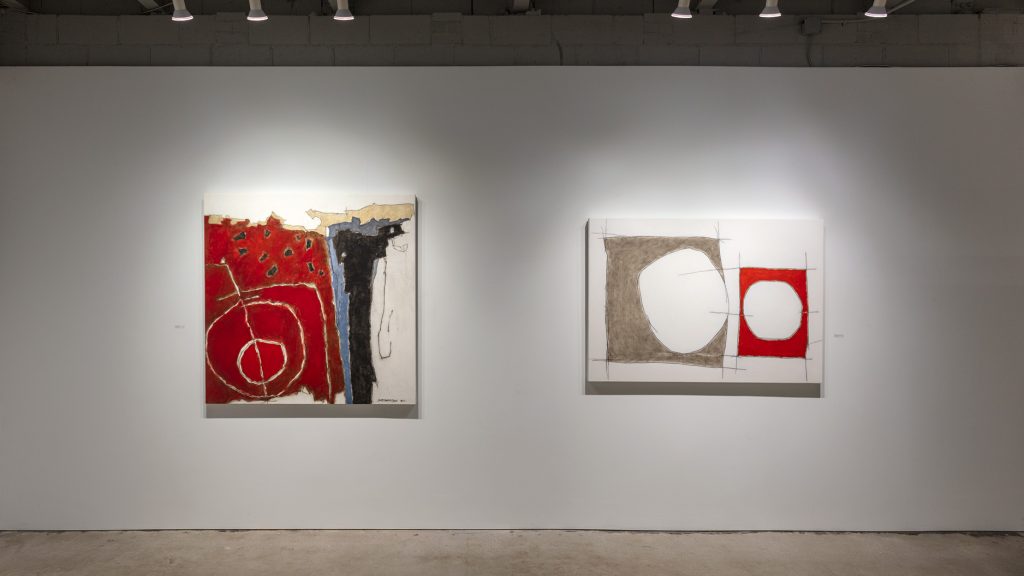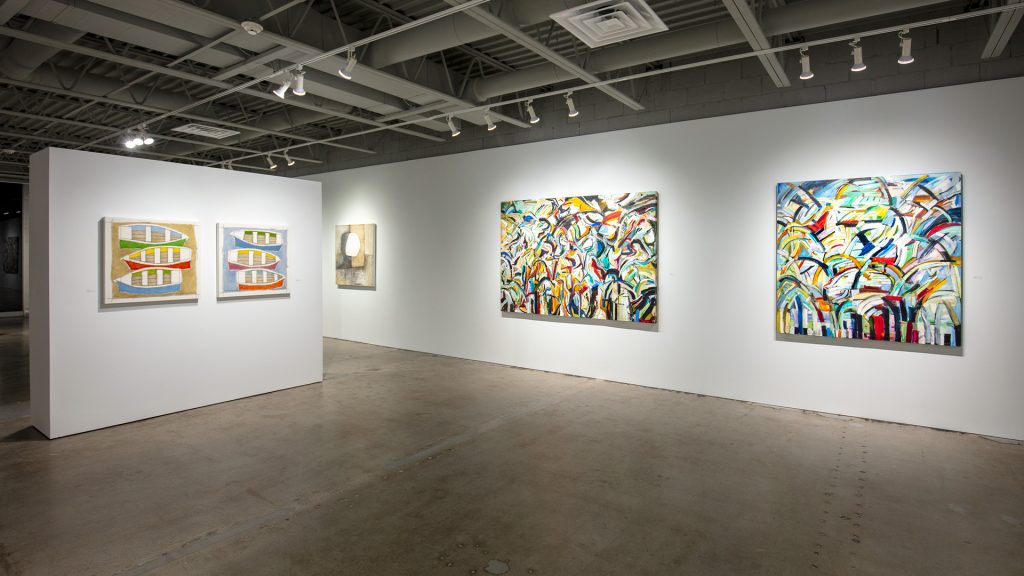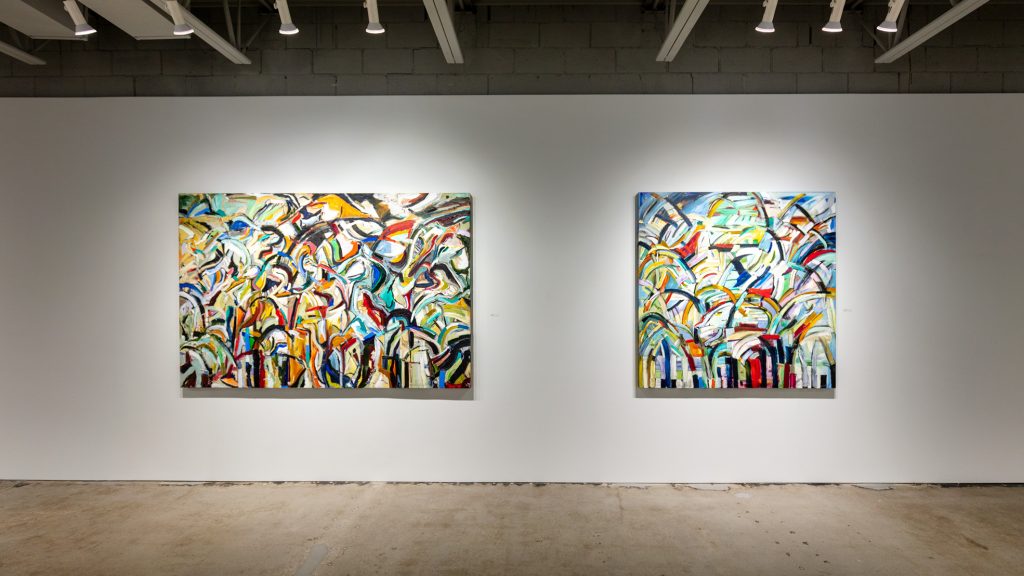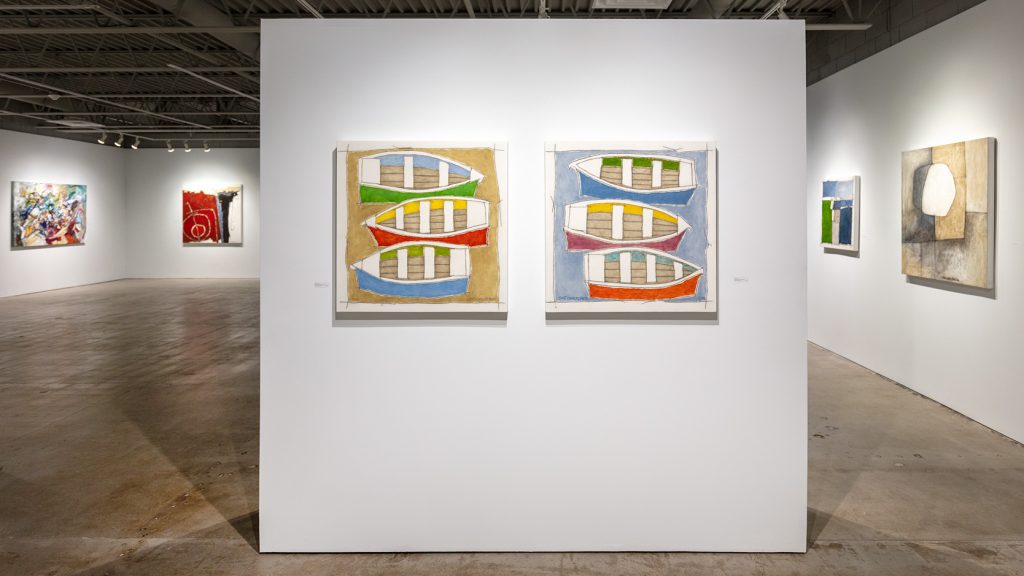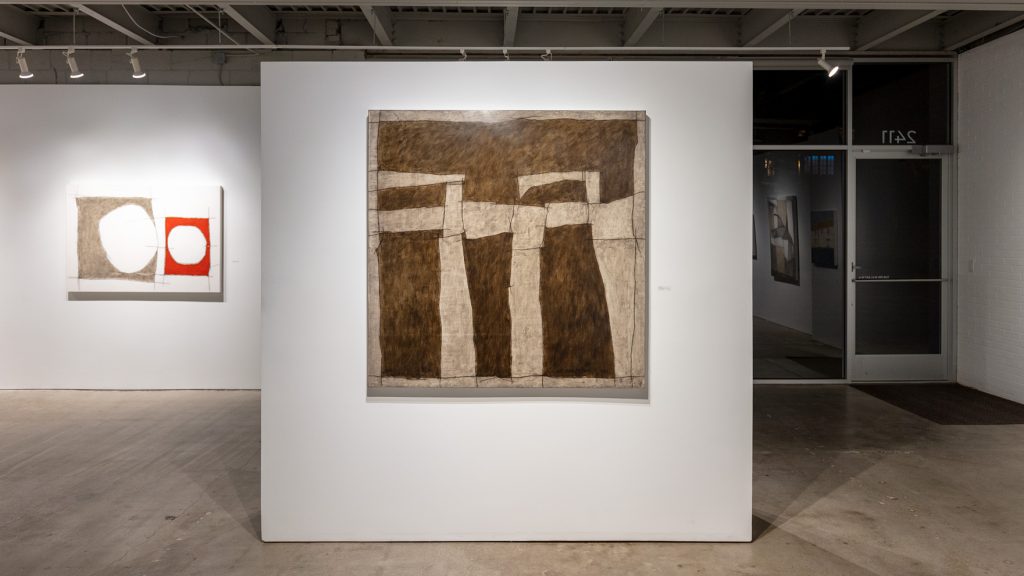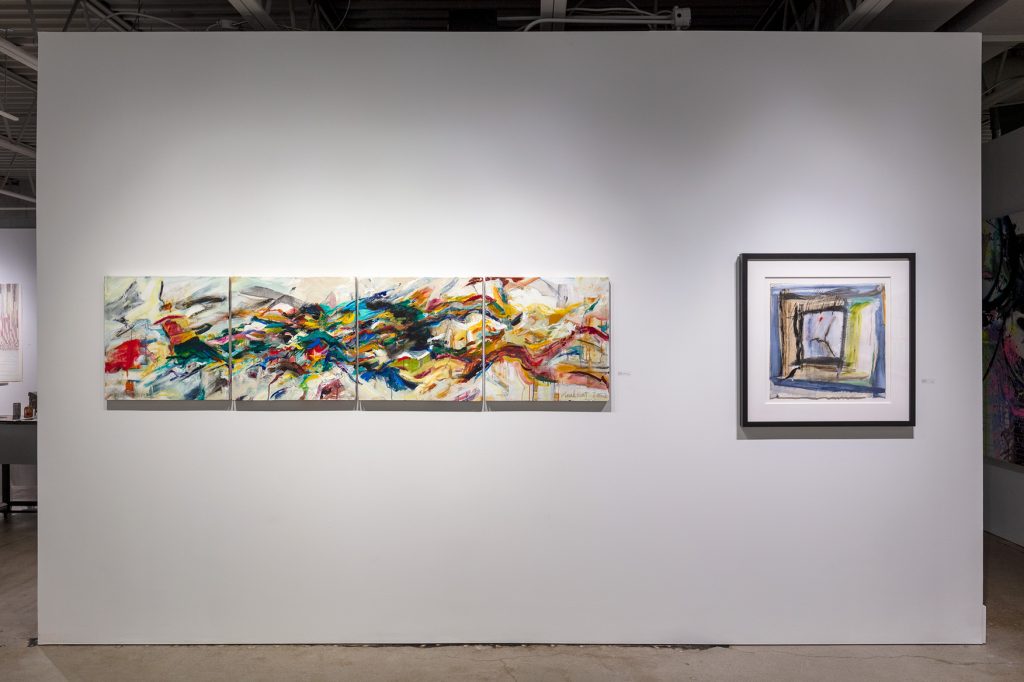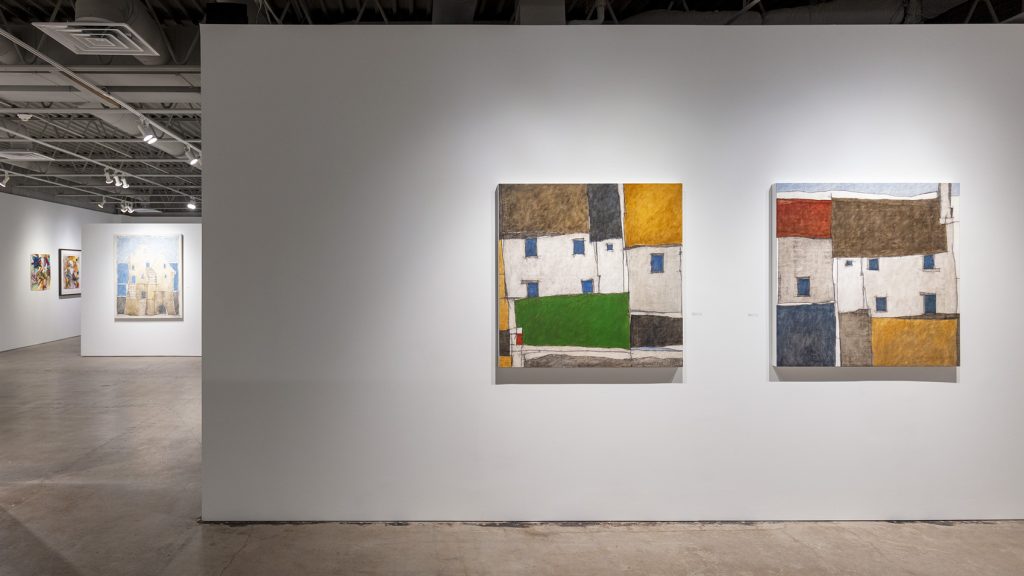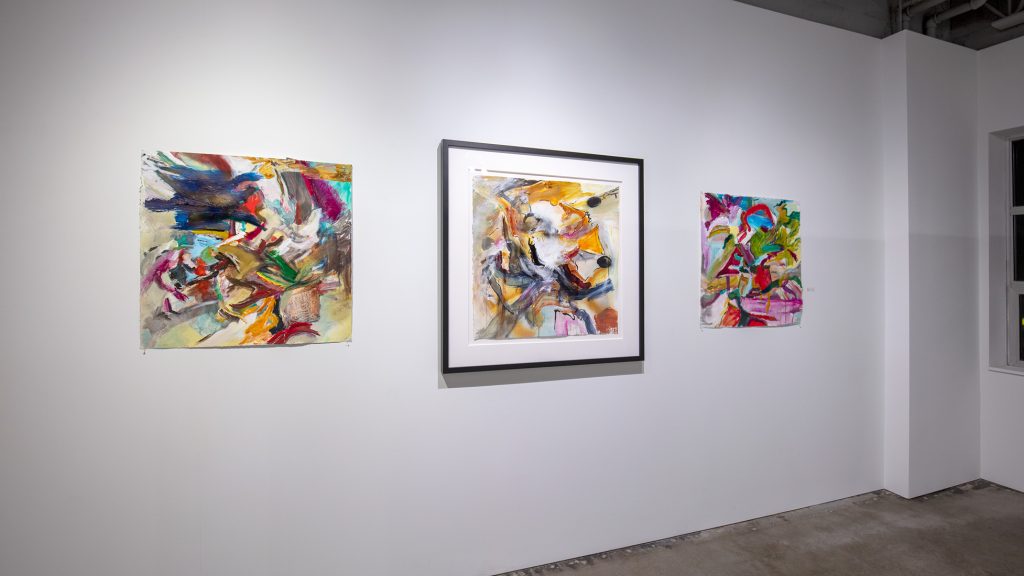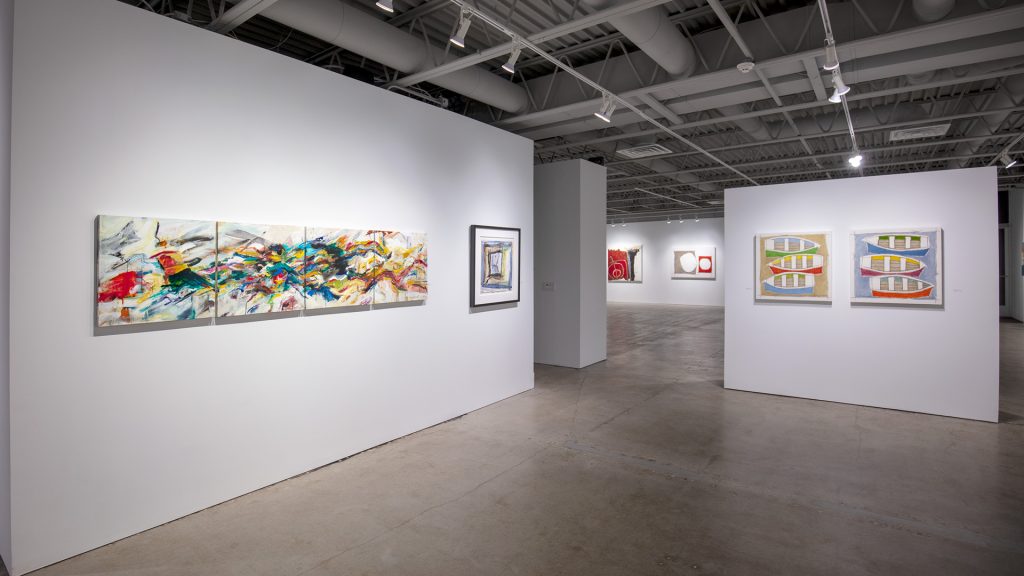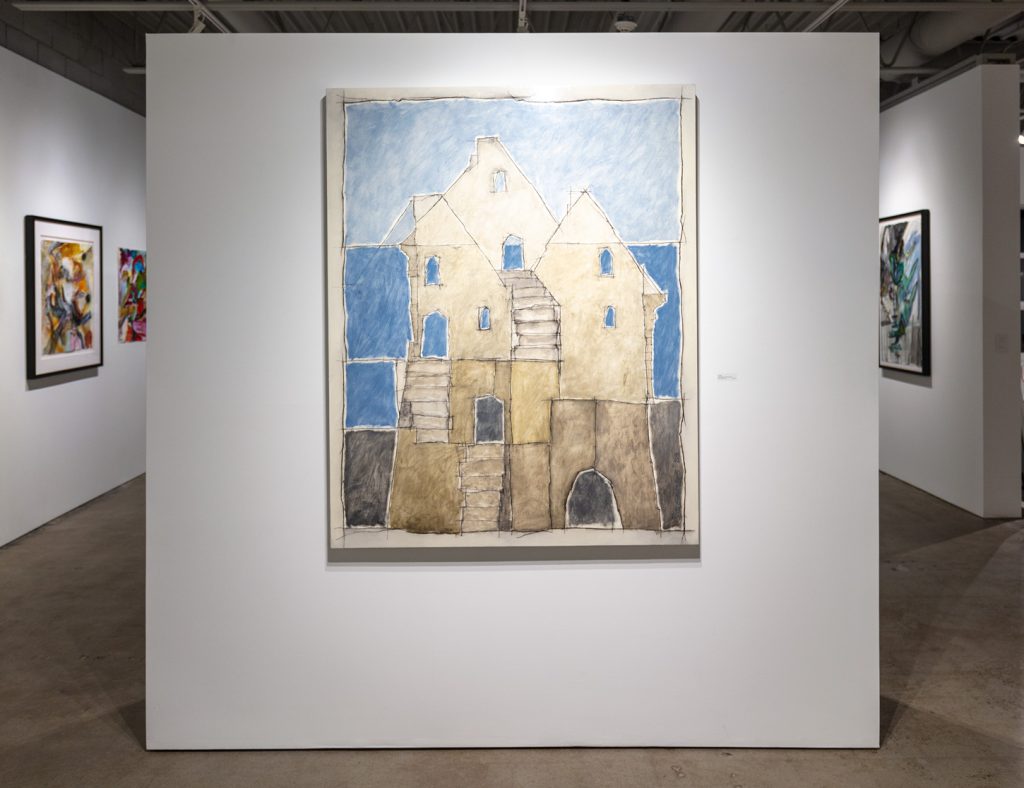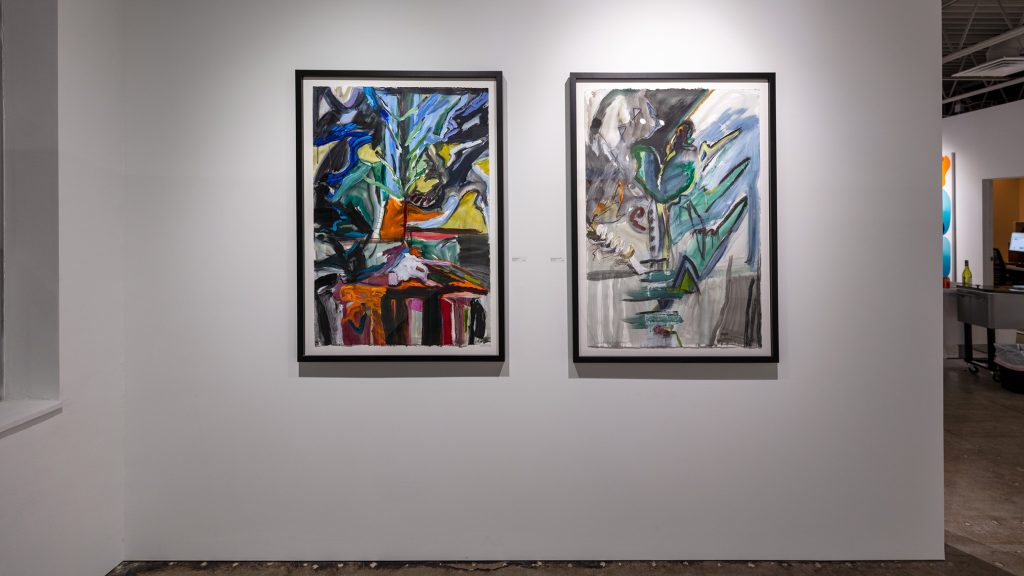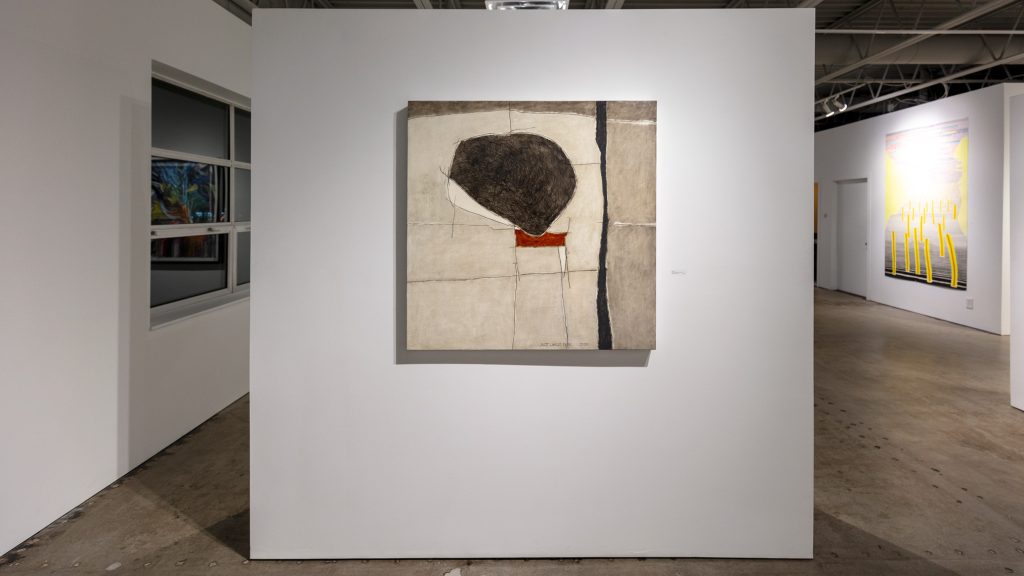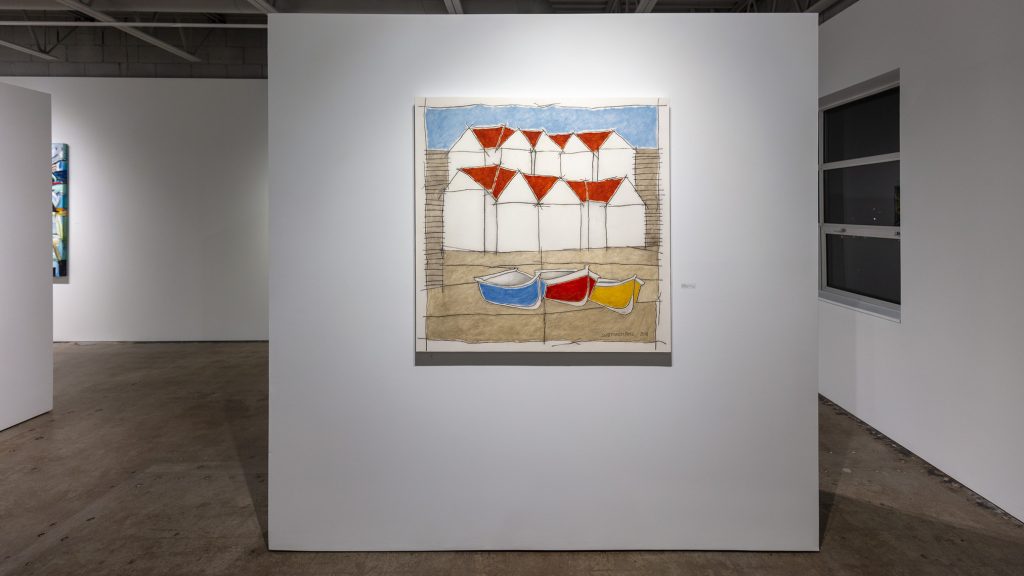TEXT BY MICHAELA MULLIN | VIEW IMAGES
Sarah Grant & Scott Charles Ross: Hurly-Burly
Sarah Grant and Scott Charles Ross paint energy—energy for the historical time of the present, acknowledging its chaos, and for taking paths to a semblance of calm. The hurly-burly of life is in Grant’s mind and comes through her brush. Her new works, partially inspired by the history of Asian art, take on the stream of paint as if it were ink, flowing. Writing. Ross uses line to gather fragments and make of them meditative maps but also to explore what feels like the collapse of certain structures and foundations. Together, Grant and Ross create epistolary works that dialogue, and are addressed to the solo viewer, as well as the world at large.
This is a show of back and forth, past and present, old and new. Take, for instance, Grant’s “The Space Between,” a swirling evocation of the fall of Rome. So many centuries between, yet a feeling of current comparable precipitation. This is a mildly tender painting of dramatic anticipation. Calm. Storm. Calm. Ad infinitum. A timeline of before and after repeats in its contemporized abstraction of history. The standing building, with its white and windows, is erect but surrounded. Surrounded by strokes of more ominous color and crosswinds.
Countries away, “Cornwall” is a quiet study of the rule of thirds—a fortified home, a blue foreground and gray back by Ross. He loves the whisper of the countryside and its architecture. But he admits the past few years, and more recently, the adversity among politicians and their constituencies has triggered a different urge—to tell not-so-quiet narratives.
Ross’ “Democracy Crashes” has elements of harbinger. This is a more macro and deconstructed landscape of circles in deep rusty red invokes a spiral, broken. Its upper earth tone seems to mimic a geographical borderline. And what follows, left to right and perpendicularly, are swaths of blue, gray, black, and white, hinting at Rubin’s face illusions, but this time within the same positive space. A line with slight erasure lands the viewer’s eye in right field, an emptying space that holds a fragment.
With “Montclus,” in France, Ross returns to neutral colors, where crosshatched roofs might be fields, and the stacking of houses fill the frame space, making of and in the work a village unto itself. And traveling on to Italy, “Piazza 22” and “Piazza 10,” are studies in color and compartments. From the view out to the buildings that surround the titular spaces, Ross makes the rectangular make sense: doors, windows, sills, stairs, walls, and roofs. The places we put ourselves through, at, on, within, and below. Contained but not detained.
Grant, however, paints boxes that cage—birds and emotions—in her large-scale painting, “Compartmentalized.” Though each section of the composition is defined, its edges are not crisp; there is a blurring and a rendering of feelings, perched. Not moving. Remaining still. Staying quiet and clipped.
In Grant’s earlier paintings, the brush strokes are often outlined in black. There is containment of hue within line, where a rainbow is not spectral but pigment, held in, put in its place. Her newest paintings, however, such as “Disrupted Landscape,” have allowed a release—slippage and shift. And Grant’s palette hasn’t so much changed as moved itself around. The black that once outlined is no longer contour; and the dark reds, greens, and blues undulate through and around each other, exposed, uncontained. Violet and indigo center the painting, intimating rolling hills and somehow conjuring Thomas Hart Benton in its tidal wave of story. This work puts out sonic vibes and catches me singing Joni Mitchell’s “Turbulent Indigo” (about Vincent Van Gogh):
Make ’em nice and normal
Make ’em nice and neat
You see him with his shotgun there?
Bloodied in the wheat?
Oh what do you know about
Living in Turbulent Indigo?
Mitchell’s is a strange question, but one that seems more and more plausible the older everyone and thing gets. The knowledge of turbulence is startling in Grant’s “A Squall,” with its green moon and tilting cross. The composition gets sucked up and out the right corner of the panel. The black sky overwhelms the landscape below. Grass is green, fire is magenta and orange with its purple center no longer centered. The hottest part is moving, the smoke is polluting, the three states of water might all be visiting this storm upon us. And the equines always know before we do, don’t they?
Grant’s “Wild Horses,” acrylic on canvas, is a polyptych of four panels. The idea of untamed animals is the perfect vehicle for a release after emotionally fraught years as mother, daughter, friend, and citizen of the country and globe. Grant acknowledges the frenzy of life with the increasing density and darkening of paint in the middle two panels and the middle ground. The first and fourth panel hold the beginning, which is slower, and the end, with its fading out. This is a stampede whose momentum and power allow the image to carry on beyond the canvases. And that is about hope.
And hope is about thresholds. Pillars and formations stand to make thresholds. Thresholds welcome change. Very solid and staunch structures are the subjects in Ross’ “The Crucible,” a large symmetrical painting in grays. These years have been a trial; but the new life they will no doubt herald is there for us to move toward—and for the making.
Stop in to see Hurly-Burly before it closes on April 9th. It will edify the heart that knows vulnerability is a strength that lets us break and reconstitute ourselves, repeatedly.
View works included in this exhibit on Moberg Shop
Exhibit Images
